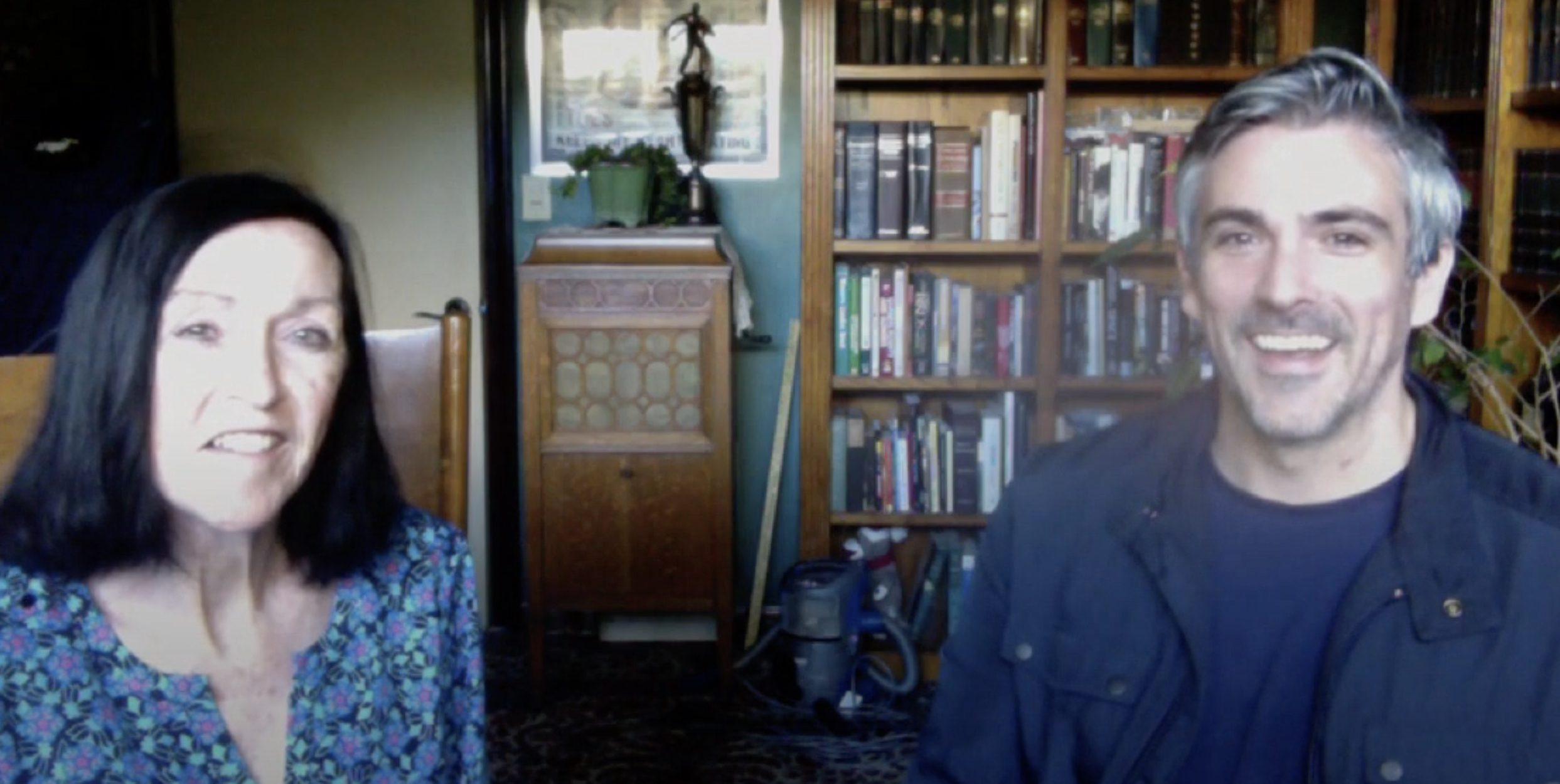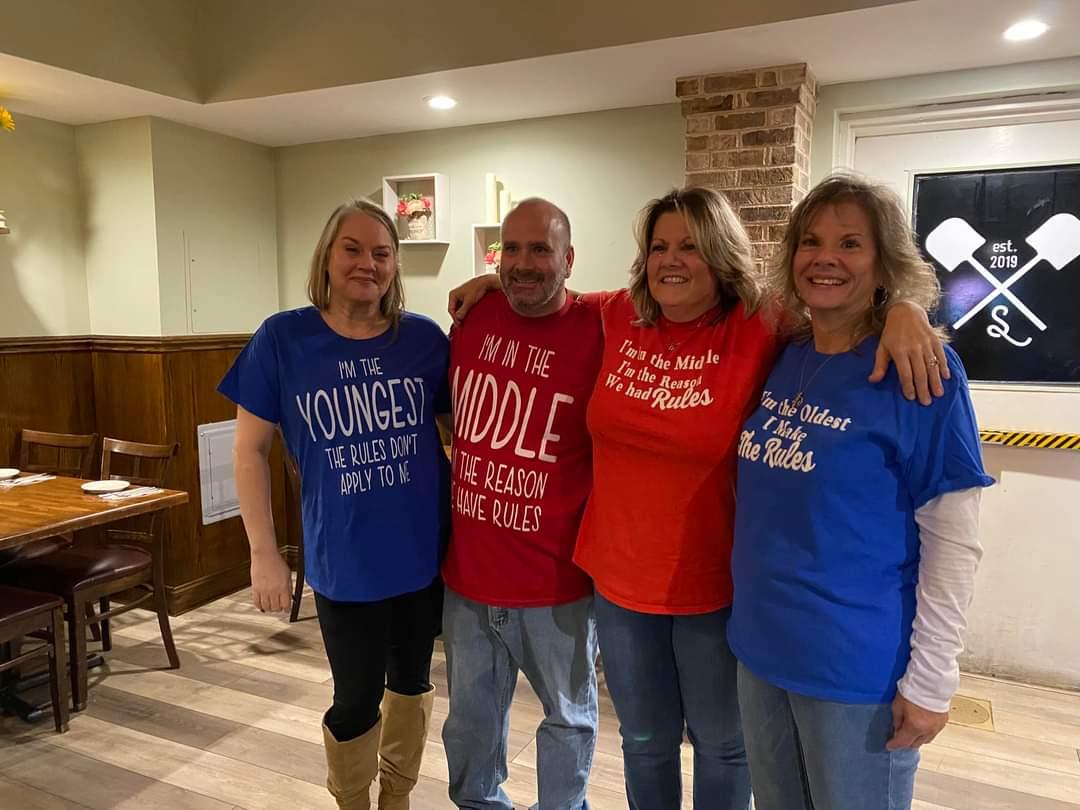Editor’s Note:There are some stories so good they need to be told a couple of times over, so for St. Patrick’s Day we thought it right to reshare a post from last year about Mary and her son Ryan connecting with their roots in Ireland. So enjoy and Happy St. Paddy’s Day.
Each March, when she was still in grade school, Mary’s parents would dress her in what passed for Irish clothes — a lot of green — to celebrate the feast of St. Patrick’s with other families who’d adopted children from Ireland.
Like two of her six siblings, Mary was adopted from an orphanage in Ireland in the early 1950s. She was raised by a family in California. She always knew she was adopted from Ireland, but she didn’t really know what it meant to be Irish.
For such a small place, Ireland has an outsized influence on the American psyche. About 31 million Americans claim Irish ancestry, according to the last Census. And whether it’s Frank McCourt’s book “Angela’s Ashes,” or Mary McCarthy’s “Memories of a Catholic Girl,” or the book “A Tree Grows in Brooklyn,” most of the best Irish-American stories are intertwined with sadness, humor, and family. Mary’s story has a little bit of each.
For St. Paddy’s Day this year, we wanted to share her story and the story of her children, and how they all connected to more than one hundred family members in Ireland that they never knew they had. Making that connection not only bonded them to people but to a place that felt familiar. Mary’s son Ryan summed up the feeling of meeting new cousins in Ireland, seeing resemblances to him and his brother and sister, and the joy of hearing family history entwined with the history of Ireland.
“I’ve never had this kind of connectedness before,” he said. “I went from being in a place where I felt like I had no connection to going to a place where I feel more connected.”

California Irish
For his mom, that connection was more than half a century in the making.
As a child, Mary always celebrated St. Patrick’s Day but that was the extent of her Irishness. Three of her brothers, her parents’ biological children, were all blonde, blue-eyed “California boys.” And although she felt loved, Mary also felt alien with her dark hair, blue eyes, and pale skin.
“I lacked that underlying sense of belonging,” she said.
That was something she would have never said out loud because she didn’t want to insult her family or appear ungrateful, but she didn’t see herself in them. And Mary lacked any connection to her birth family or the land of her birth, Ireland.
“I always wondered, you know, who am I and where do I come from?”
St. Patrick’s Mother and Baby Home
In the 1950s, being an unwed mother in Ireland meant shame and ostracism, even more than it did in the US. When women became pregnant out of wedlock, their families often sent them off to special homes, many of which were run by the Catholic church. They’d stay at those homes for many months until they gave birth. After her birth at St. Patrick’s Mother and Baby Home, Mary remained until she was adopted at six months and then sent to California.
What happened at St. Patrick’s Mother and Baby Home — and at other homes like it across Ireland —only came to light decades later. The rate of infant mortality was quite high. For the children who were not adopted to families, life there could be quite bleak, and sometimes the young mothers only reluctantly gave up their children. So in many ways, Mary knows she was fortunate to have been brought to the US. Still, she wanted to know more.
All Mary had was a passport and a birth certificate that listed her mother’s name and where she’d been born. In the 1970s she learned more about St. Patrick’s Mother and Baby Home, which she visited when she traveled there in the 1970s. But she didn’t have any other information on her birth mother. She was helped eventually by an Irish citizen who’d made it his mission to help adoptees and their birth mothers find each other if they wanted or to simply learn more about what had happened to them. Some birth mothers had only given up their children under duress and wanted to find them. The 2013 movie Philomena detailed one mother’s search for her child sent to the United States.
Mary’s story was different. She did eventually travel to Ireland in the 1970s and visit the orphanage. It wasn’t until later in the 1990s with the help from the Irish citizen who helped adoptees like her that she was able to connect with her birth mother’s sister. But her efforts to meet her mother were rebuffed at that time. Mary was able to give her photos of her and her children to share with her birth mother.
“There was still a lot of fear and shame,” Mary said.
Few biological family members even knew of her birth.

DNA Unlocks the Secret
Despite not meeting family, Mary felt the pull of something deeper from that trip.
“I saw more people who looked like me,” she said. “I became interested in learning more about where I came from.”
All that would have to wait, though. This was all long before DNA testing opened up ways of finding families that didn’t rely on a paper trail. With name changes and her father’s name unknown to her, Mary had very little to go on. Besides, she soon started a family of her own. She was busy working as a nurse and raising her sons Ryan and Michael and her daughter Stephanie.
Mary had her life to live, and her search grew dormant.
It wasn’t until her own children were grown that the possibility to connect with her birth family in Ireland emerged again. But this time it was her children who picked up her search. It started with her daughter, Stephanie, who used 23andMe to explore health insights, but noticed a message from an unknown DNA relative.
The relative was in Ireland and had no idea that he had a close cousin in the United States. He was in shock and wanted to know more.
“He ended up being my mom’s cousin,” said Ryan. “After a few texts and emails over a few days, we were able to pinpoint who my mother’s father was.”
For the first time, Mary learned a bit about her father. He’d been a bouncer and a process server. He traveled a bit, worked in Dublin, and served in the military in England. He had at least one other child out of wedlock, who Mary connected with and who lived in Scotland. After he was married, he had five other daughters and one son. He and his wife lost two other children. Most of her siblings, however, were still alive with adult children of their own.
As they messaged back and forth they were able to piece together more about him and her family, but none had known of Mary’s existence. Her father had passed away and they couldn’t ask him, so she didn’t know how he met her birth mother or the circumstances around her birth. As for her mother’s side, after her initial efforts were rebuffed she had more luck in 2001 when she connected with a sister, and although she didn’t meet her birth mother she shared photos of her family for her birth mother to see.
Apart from her mother and her mother’s older sister, no one knew of her birth, Mary said. They too were shocked, but most of them were open, once they learned of her existence. She found out that she had four maternal sisters and one brother. On her father’s side, she had five sisters and one brother. She has one other brother, on her father’s side who was also adopted by a family in Scotland. Suddenly Mary had dozens and dozens of Irish relatives who were eager to meet her.
“It was a shock when they found out; no one knew,” Mary said.

An Irish Welcome
In 2019 before the pandemic, Mary and her children visited Ireland. Mary went back to where the orphanage once had been and visited some of the places she’d been before. But this time she was brought into the homes of her family.
Gone was the shame of the secret of having had a child out of wedlock, replaced by curiosity and a desire to connect with family.
Mary met her siblings, and more than 100 cousins, nieces, and nephews. Her sisters noticed the family connection right away.
At one of the meetings with her sisters, she walked into a home and toward the back of the house, looking out the window and sort of surveying her surroundings. Her sisters said that was just what they do. And two of her sisters on her mother’s side are nurses, like her.
One relative took Mary and Ryan around Westport in County Mayo where relatives lived, and they would stop at homes or pubs to meet relatives. She got to see photos of those who passed away. Sometimes she’d meet a cousin or a niece or nephew and she’d be struck dumb by how much they looked like one of her sons or her daughter.
“It was a little surreal,” Mary said.
And perhaps what she didn’t expect was how important it all was for her children. This connection was missing for them, too, so seeing it had a profound impact.
Mary said that listening to her son Ryan explain their story struck her because she suddenly understood that they felt some of what she felt looking around at her adopted family and not seeing herself in them.
“I never realized that for them it was also hard to be around family that doesn’t look anything like them,” she said.
After their trip to Ireland, several of their Irish relatives wanted to visit Mary and her children, but the pandemic postponed that reunion. The family hopes that they’ll be able to extend the welcome mat to their Irish family soon.
Find out more
Want to learn more about whether you have Irish ancestry? 23andMe customers go to their Ancestry Composition to learn more.
Not yet a customer? Find out more about our Ancestry Service here.




